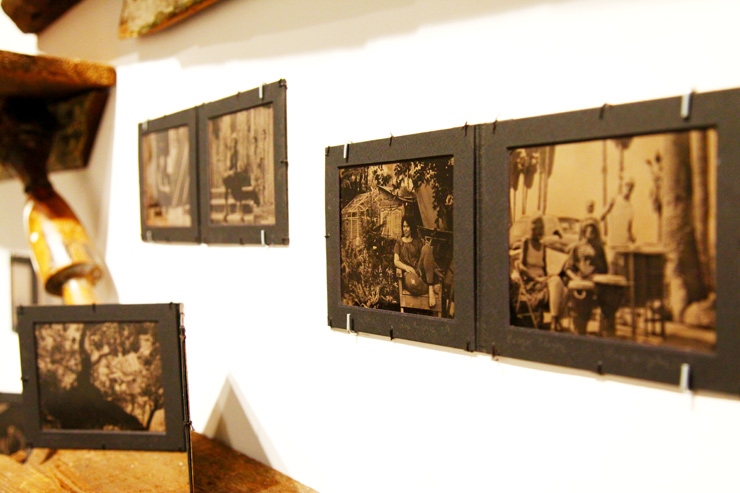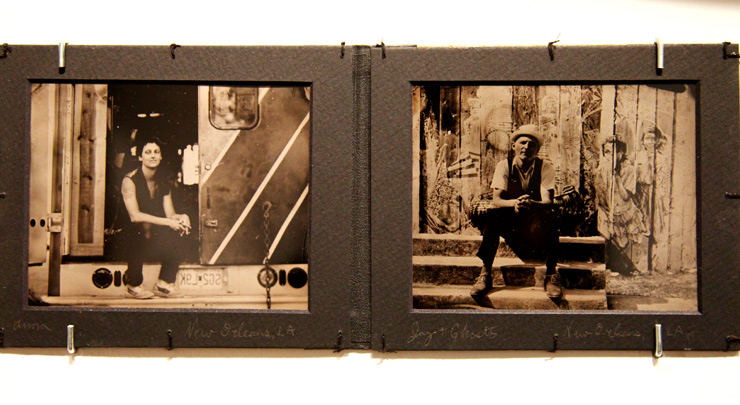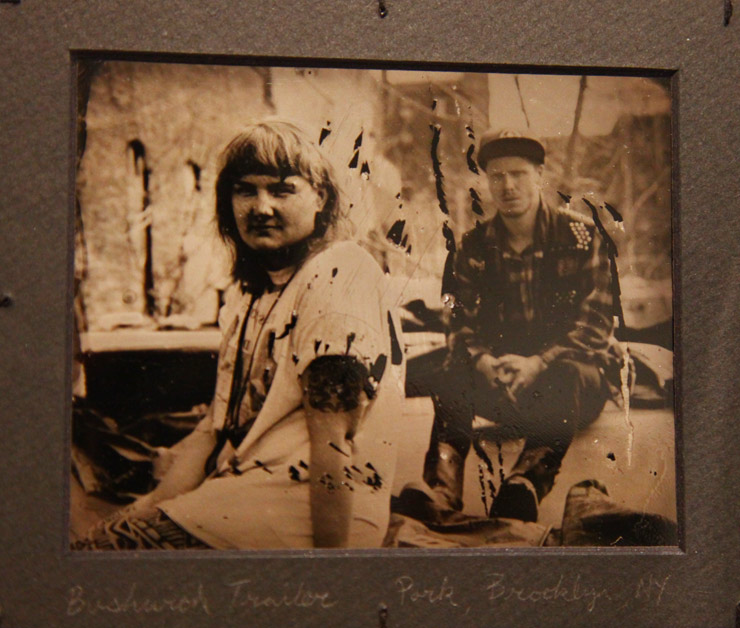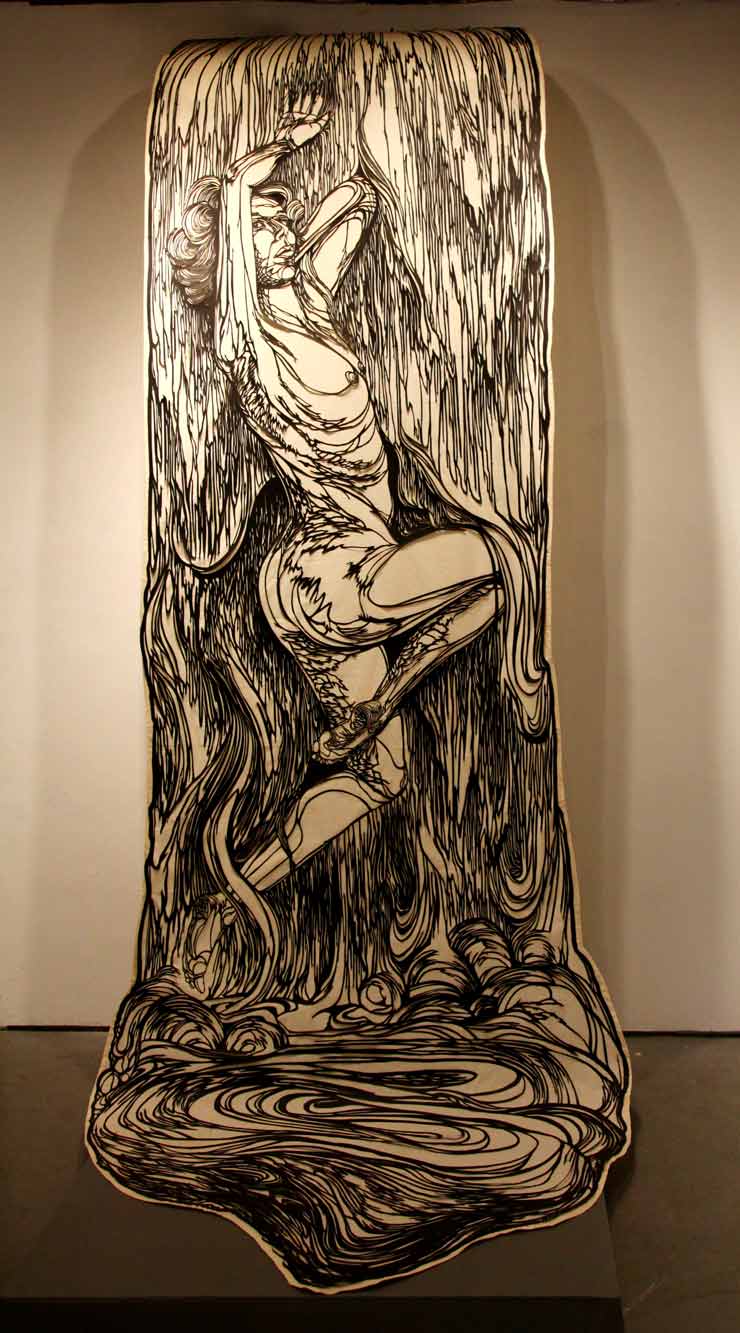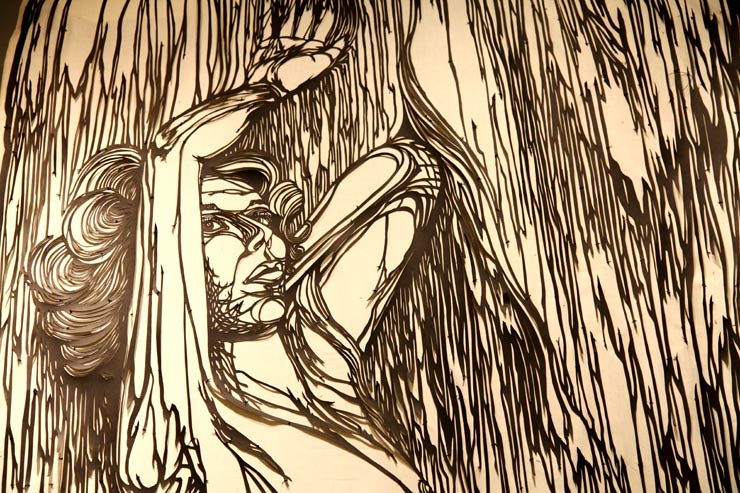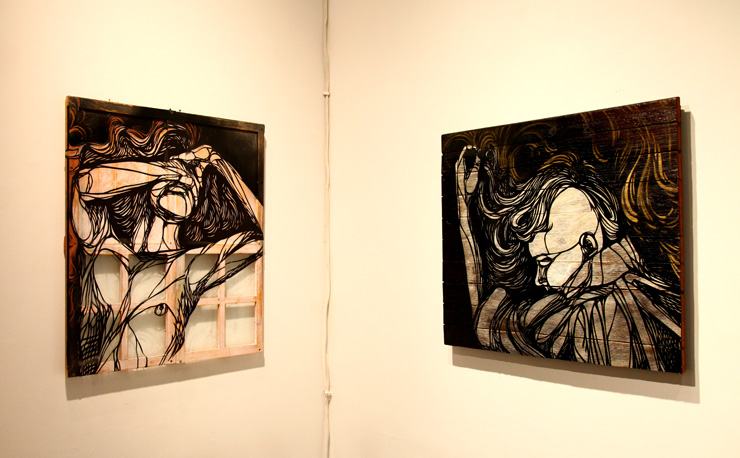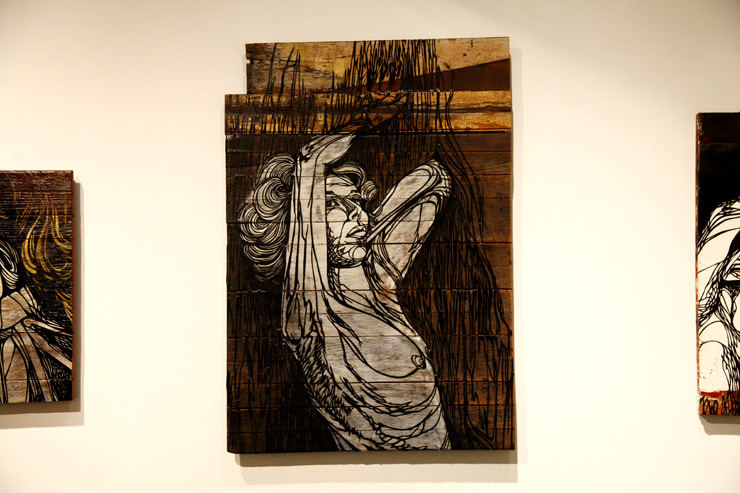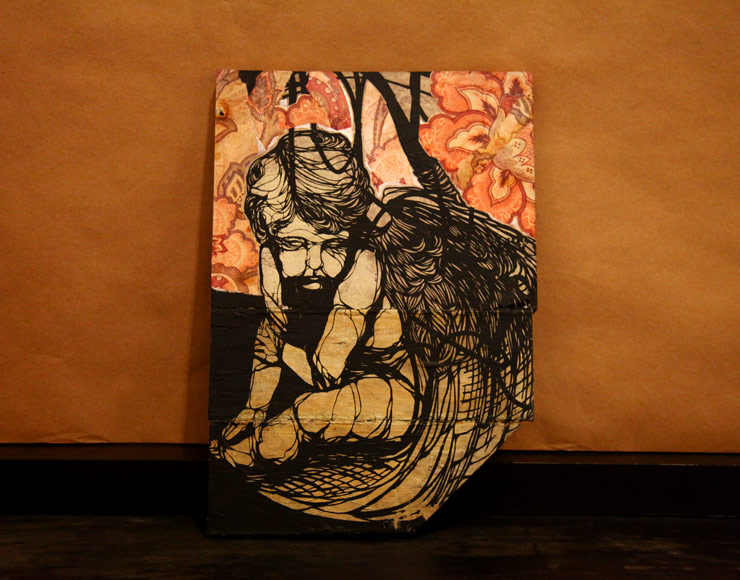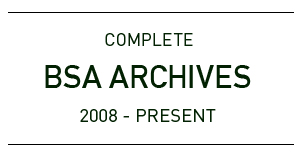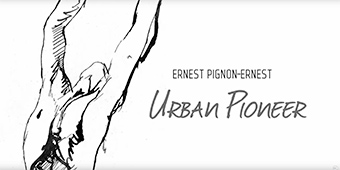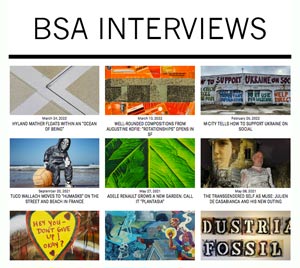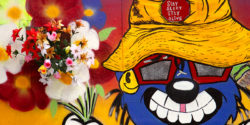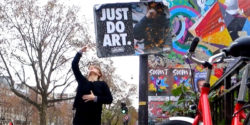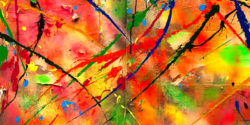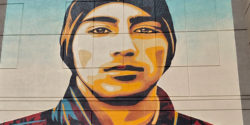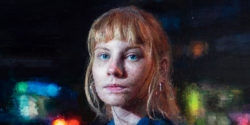About a year ago you may remember the Kickstarter banner we ran on BSA to raise money for New York Street Artist Robyn Hasty AKA Imminent Disaster to travel across the US capturing portraits with a very old photographic process for a project called “Homeland”. The campaign was successful, and despite an episode where her car “Cecelia” completely broke down and needed a new engine, Robyn set out to find another side of the country, seen through a new set of eyes. The first portrait result we saw was the image she put in BSA’s show last August in LA, but tonight you have the opportunity to see her first real exhibition of this work at Kesting/Ray Gallery in Manhattan. In addition she’ll be showing new cut paper works that many will be familiar with from her work on the street as Imminent Disaster in the late 00s.
Robyn Hasty (Photo © Jaime Rojo)
Over the course of 15,000 miles with her wet plate collodion camera and her chemicals in hand, Robyn set out on a road trip across the country to take photographs of people living outside the established urban settings and gridwork that forms much of the US. These simple and complex works are “magical alchemy”, according to Hasty.
“Every time I took a picture it just surprised me how it looks when it comes up. The camera doesn’t see like your eye sees. So every time you see what the camera sees – it’s a discovery.”
The new portraits bring to mind the work of the late master photojournalist from Hoboken, New Jersey Dorothea Lange (1895-1965). Ms. Lange documented with her arresting images the plight of the migrant workers during the great depression for the Farm Security Administration from 1935 to 1939. Now amidst our great recession, her wet plate collodian tintype produce beautiful portraits of her subjects that seem strangely akin to those subjects of that time – captured in their surroundings as they live today.
Robyn Hasty. New Orleans (Photo © Jaime Rojo)
Ms. Hasty took a few moments from hanging the show to talk about the new work with Brooklyn Street Art.
Brooklyn Street Art: What did you think you were going to discover
Robyn Hasty: I guess I was hoping to find relationships between a community that I’ve been working with in New York, and across the country in various ways, to see how that community kind of extended beyond those boundaries and was formulating into a movement. It is a national movement creating an alternative way of living that is different from the capitalist system.
Brooklyn Street Art: In a way you kind of envisioned, or saw in a some way, what happened at Zuccoti Park but in different parts of the country?
Robyn Hasty: I think the thing that was significant about Occupy Wall Street was that it started in New York and within weeks it had spread to most other cities in the country. That seems to indicate that there is actually an unrest and a unity between people who feel that they want radical change and I think I do see a lot of commonalities with the different people I met. An overlap in ideologies; they may not agree in ideologies and there may not be an established ideology that is stated, that has been formalized.
Robyn Hasty. Brooklyn, NY (Photo © Jaime Rojo)
Brooklyn Street Art: You encountered people you didn’t know. Was it difficult for them to say yes to posing? How did you approach them?
Robyn Hasty: Most people were receptive to it. I just introduced myself and sometimes I would chat for a while and then eventually I’d show them the wet plates I’d already taken and ask them if they wanted to be involved in the project and have their portrait taken. Usually they said yes. There were a few cases where they said no.
Robyn Hasty. St. Louis, MO (Photo © Jaime Rojo)
Brooklyn Street Art: What sort of inspiration do you get from these people?
Robyn Hasty: I feel like I choose the portraits that I take because I feel a connection to my subjects, like as a cohort. I respect what they are doing. I am inspired by what they are doing, and I feel like there is kind of an overlap between what we’re trying to do in our lives. Based on that relationship, it is the reason why I’m taking the portrait and what I’m trying to convey in the portrait to other people.
Brooklyn Street Art: What was it like traveling across the country? Was it ever lonely?
Robyn Hasty: I rarely felt lonely. I think I had a very positive experience because I realized how large the country is, how beautiful it is, how many opportunities there are to build and to re-envision it. I think I saw that from traveling across it.
Robyn’s large scale, cut paper portraits for which she is mostly known with her work on the streets are part of this show as well.
Robyn Hasty. Self Portrait (Photo © Jaime Rojo)
Robyn Hasty. Detail (Photo © Jaime Rojo)
Robyn Hasty (Photo © Jaime Rojo)
Robyn Hasty (Photo © Jaime Rojo)
Robyn Hasty (Photo © Jaime Rojo)
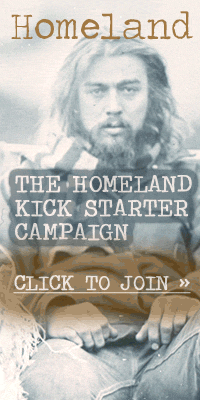 The original banner we ran on BSA for the Kickstarter fundraiser. (left)
The original banner we ran on BSA for the Kickstarter fundraiser. (left)
For more information and complete details about tonight’s show “On the River…” opening at Kesting/Ray Gallery, click here.
Other Articles You May Like from BSA:
Our weekly focus on the moving image and art in the streets. And other oddities. Now screening : 1. Gross Domestic Product - Banksy2. New Stop Animation Project from Caledonia Curry AKA Swoon...
Filial piety (Xiao Jing) is one of the virtues of Confucian thought (孝): a love and respect for one’s parents and ancestors. In the West we talk of filial piety in the context of fraternal love, indee...
The crying, the screaming, the knashing of teeth - the gates of inquisitorial mayhem have opened into the gallery here where in just mere days you will see the fearful state of the fatally flawed r...
Our weekly focus on the moving image and art in the streets. And other oddities. Now screening:1. BSA Special Feature: 'Gold Mine' by Pejac2. Graffiti & Jail: Doug Gillen and FWTV3. Said D...
Here are a handful of in-progress shots at Memorie Urbane 2014 featuring Etnik and Millo at work on their site-specific pieces. The festival appears to be a departure from standard "urban art" aerosol...
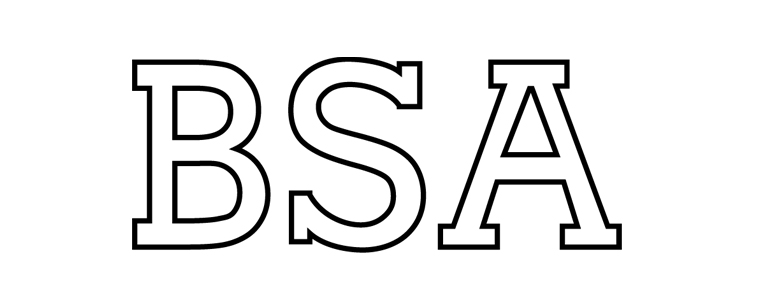 BROOKLYN STREET ART LOVES YOU MORE EVERY DAY
BROOKLYN STREET ART LOVES YOU MORE EVERY DAY